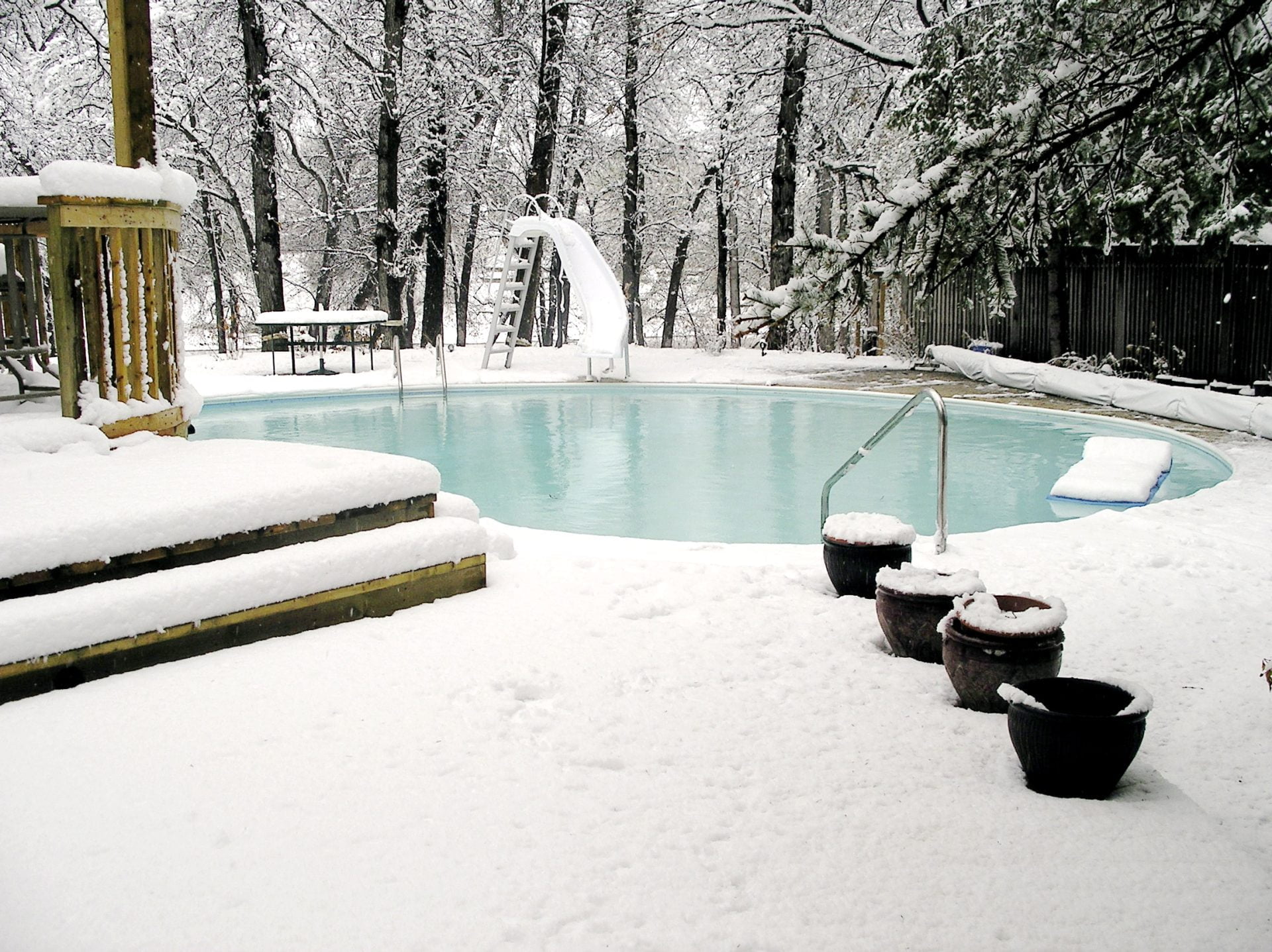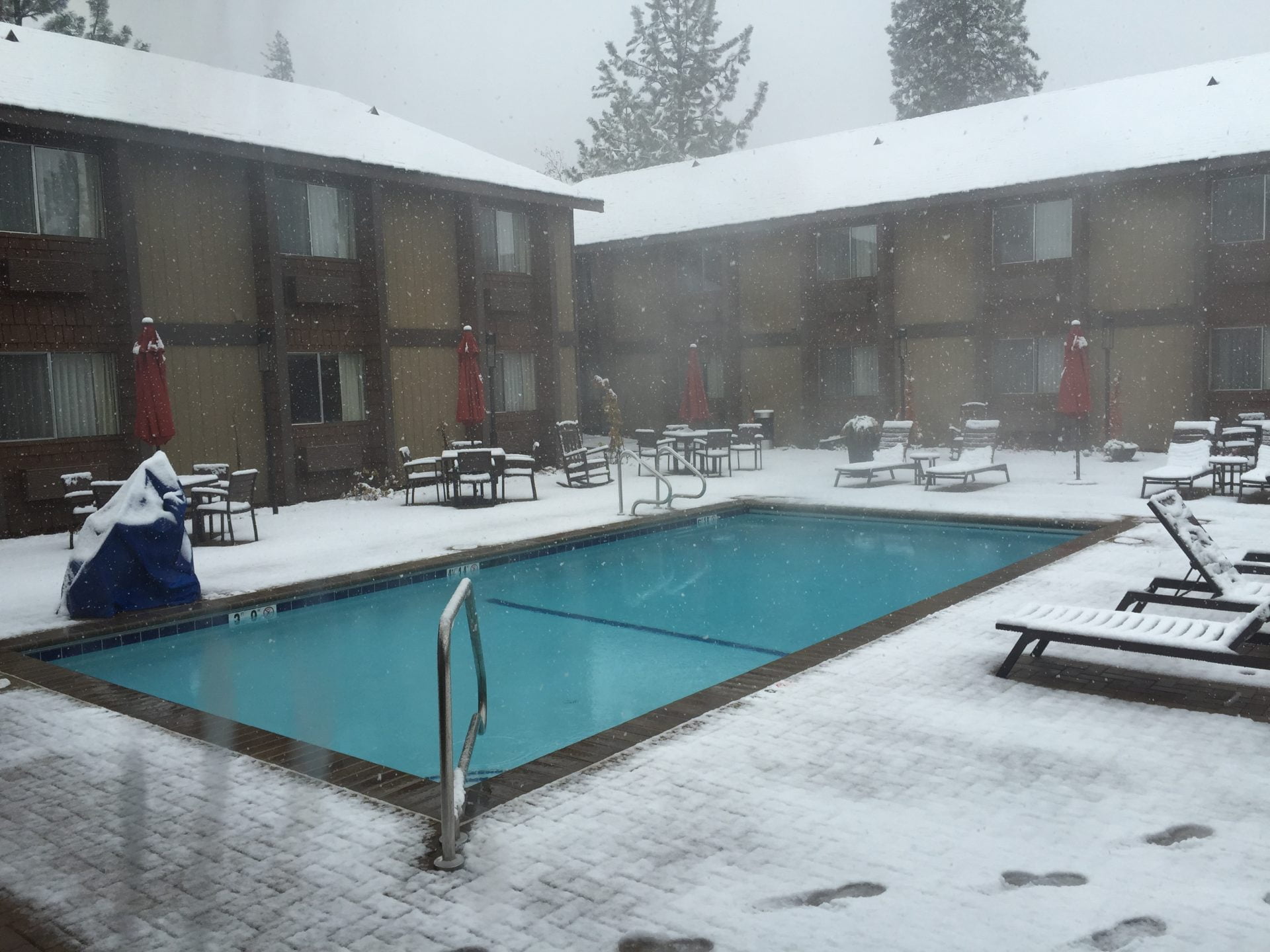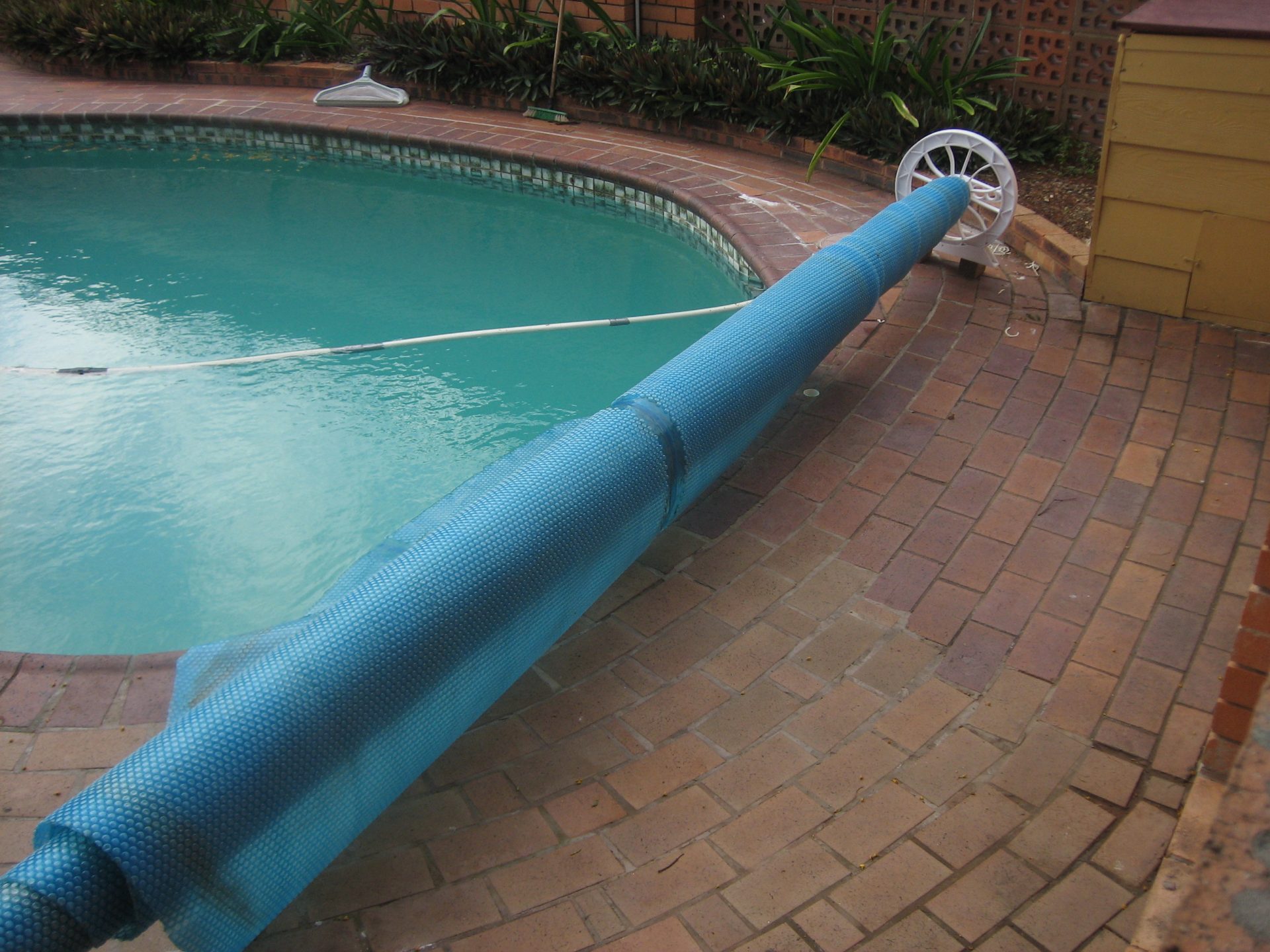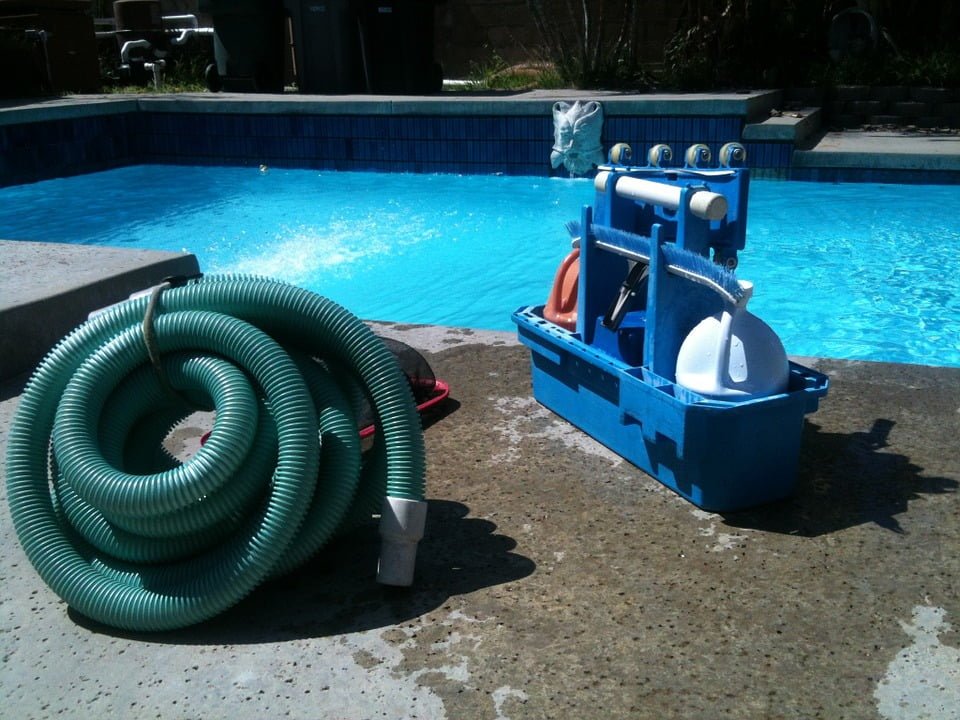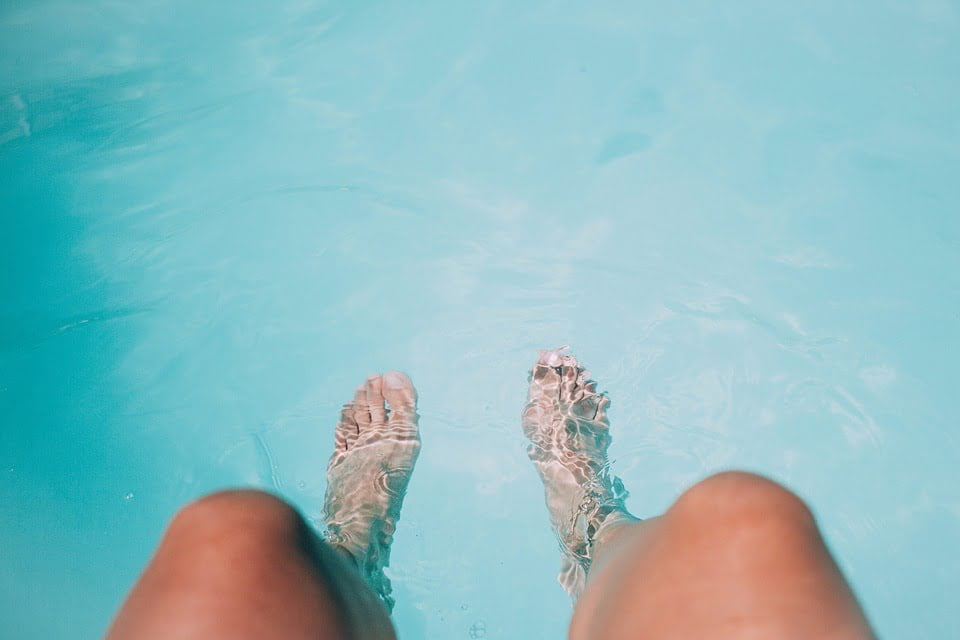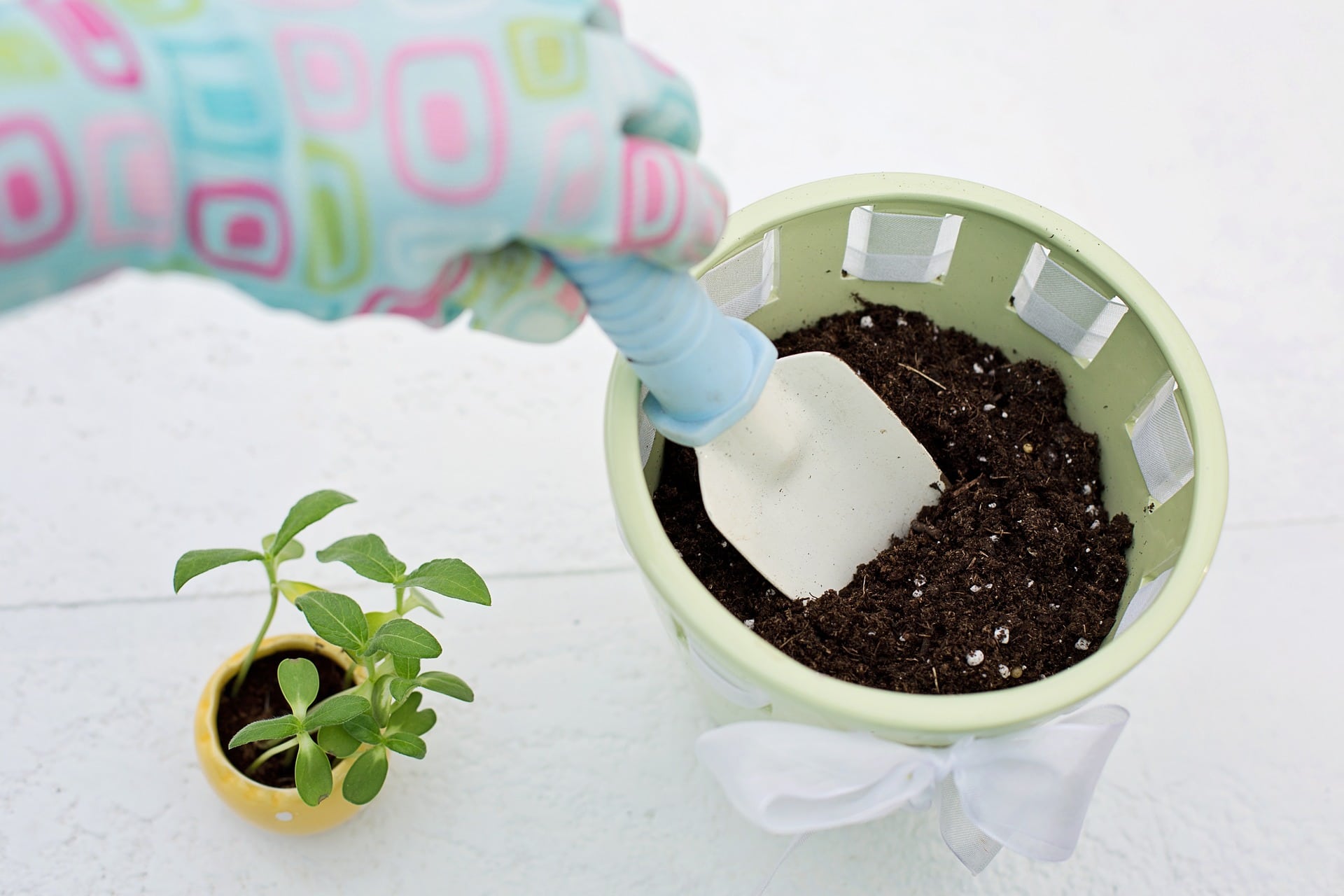Swimming pools are so relaxing to be in during the summer. They help cool you down, help you relax, and can even be a great workout if you swim in them. Unfortunately, swimming pools also require a lot of maintenance. From adding chemicals to cleaning your pool, these maintenance chores seem to never end. While you may think that pool maintenance only needs to be done in the summer, it also needs to be done in the winter. Winterizing your pool can help prevent the water from freezing, which will, in turn, prevent your pool from becoming damaged. In this article, I go over everything you need to know about how to winterize a pool. Whether you have an in-ground swimming pool or an above-ground swimming pool, these tips on how to winterize a pool should help you. So, let’s dive in!
How to Winterize a Pool
There are two main types of pools: in-ground pools and above-ground pools. The steps for closing a swimming pool for the season greatly depends on what kind of pool you have. Above-ground pools are often easier to take care of since they can often be put away for the winter. Therefore, they require less maintenance during the winter months. However, in-ground pools don’t need to be taken apart, so you don’t need to find a spot to store your in-ground pool for the winter months. Below, you find two separate sections for how to winterize a pool. The first one is how to care for an in-ground pool during the winter months, and the other is on how to care for an above-ground pool. Winterizing a pool can be easy if you take the proper steps.
How to Winterize an In-ground Pool
Winterizing an in-ground pool is fairly simple. Basically, you’ll need to remove any debris in the pool, blow water out of the pipes and equipment, add winter chemicals, and cover your pool with a pool cover. In order for you to winterize your in-ground pool, you’ll need the following supplies: rubber plugs for each of your return valves and skimmers, a winter chemical kit, a pool cover, a set of water tubes, and a leaf net. As for tools, you’ll need a loops wrench, a 5-gallon bucket, and screwdrivers (a flat and a Phillips-head). Here are the steps to winterizing your in-ground pool.
1. Remove All Toys and Floats from the Pool
Before you shut down your pool, make sure you remove any toys and floats. Have them stored somewhere they won’t be damaged by the weather. A garage or shed is a great place to store pool supplies. If your pool floats need any special care, be sure to do it before you put them away. For example, the floats may need to be deflated.
2. Remove Any Debris
Clean any debris from the skimmer and pump basket. You should also skim your pool one last time before placing on the cover. Skimming the pool before closing your swimming pool will prevent any lingering debris from settling at the bottom of your pool. This will make your job easier in the spring, as you won’t have to remove much or any debris.
3. Add Chemicals
Adding chemicals to your swimming pool will help prepare it for winter. Pool Shock is a great option, as is rust and scale remover. You can purchase these chemicals from pool supply stores and Amazon. Before adding Pool Shock to your pool, fill a bucket about 3/4 of the way full with water and stir the Pool Shock in. When properly mixed, pour the bucket’s contents out as your walk around the pool to evenly disperse. It is recommended that for every 10,000 gallons of water you will need 1 pound of Pool Shock. As for the rust and scale remover or algaecide, you can simply pour it directly into the water without pre-mixing it.
4. Purchase Your Pool Cover and Leaf Net
Measure your pool to find out what size cover and leaf net you need. After you measure your pool, you can purchase a pool cover and leaf net that measures that same width and length. You can purchase leaf nets and pool covers at Walmart, Home Depot, Amazon, and pool supply stores. Once you receive your pool cover and leaf net, check to make sure it is the right measurement. If not, now is the time to contact the seller. It is important that your pool cover and leaf net measure the same length and width of your pool. If they don’t, debris and snow could still get into your pool. While it isn’t as big of a deal if the covers are too large, you should try to get it to be the size that you need it to be.
5. Install the Pool Cover and Leaf Net
Now that you have your pool cover and leaf net, it is time to install them. Lay out the length of your cover beside your pool. With a person on opposite sides of the cover, grip the cover’s edge and walk it over the surface of the pool. If possible, try not to get any water on the cover. Water could weigh it down and cause it to sink. If you want, you can secure the pool cover with a complete set of water tubes. Slide an empty water tube through the loops of the winter cover. Each bag should fit through two to three of these loops. Afterward, fill the water tubes with water. This will help secure the cover and prevent it from blowing away.
As for the leaf net, you will repeat the same process that you did for the pool cover. Tie the leaf net onto the water tubes so that it doesn’t blow away. The leaf net is necessary if you live near trees. It will prevent the leaves from falling on your pool cover, as this could cause the pool cover to decay. Check your pool cover and leaf net to make sure they are secure. Make any minor adjustments that you need to.
How to Winterize an Above-Ground Pool
Although you can take apart your above-ground pool for the winter, there are some steps you can take to winterize it. That way, you don’t need to find a spot in your garage or shed for your pool, and it is ready for use in the spring. Caring for an above-ground pool is very similar to caring for an in-ground pool. You need to clean it, add chemicals, remove any accessories, and add a pool cover. However, there are also some extra steps, such as winterizing your lines, pump, and filter. Below, you’ll learn everything you need to know about how to winterize a pool that is above-ground.
1. Clean Your Pool One Last Time
Similar to winterizing an in-ground pool, you’ll want to clean your above-ground pool one last time before you winterize it. This prevents you from having to do extra work in the spring. To clean your pool, you may need a pool vacuum, brush, and a pumice stone. You’ll also want to use your pool skimmer to remove any debris in your water.
2. Test Your Water
Before you close your swimming pool, you’ll want to make sure it has the right pH. This will once again prevent you from having to do extra work in the spring. You can test the water yourself with test strips or a water testing kit. For the most accurate results, you can take a water sample to your local pool store and have them test it for you. The pH should be between 7.4 and 7.6, and the alkalinity should be between 100 and 150 parts per million (ppm). Since you won’t be adjusting the water balance during the winter, it’s better to be on the high side of these ranges when you close your pool. They’ll decrease over time, so you don’t have to worry about it being too high when it is swimming season again.
3. Add Chemicals
Adding chemicals to your water is necessary for preparing your pool for winter. Pool Shock, algaecide, and rust remover are all great options. For the Pool Shock, fill a bucket about 3/4 of the way full with water and stir the Pool Shock in. You won’t have to do this with any of the other chemicals. Instead, you can pour the other chemicals directly into the water. For the Pool Shock, it is recommended that for every 10,000 gallons of water you will need 1 pound of Pool Shock.
4. Clean and Plug Your Lines
Next, blow the excess water out of the lines from the skimmer, through the equipment and back to the pool, then plug the lines at the pool using expansion plugs. If you don’t blow the lines, add swimming pool antifreeze into the lines. Make sure you follow the manufacturer’s package directions to reduce the risk of damage.
5. How to Winterize the Pump
Not only do you need to winterize the pool lines, but you must also winterize the pump. To do this, completely remove all drain plugs to drain and remove the pool pump, chlorinator, and all the hoses. Keep the pump, chlorinator, and hoses indoors to prolong their lives.
6. How to Winterize the Filter
If you have a sand filter, set your multiport valve to “Winterize” and remove the drain plug at the bottom to allow the filter to drain completely. If your multiport valve has a bleeder valve and a sight glass, remove those too. You should bring your filter indoors for winter storage. If the weight of the sand makes this too difficult, you can leave it outside only if you remove all the drain plugs. If the plugs stay connected, your filter tank could crack in the freezing conditions.
For a Diatomaceous Earth (D.E) filter, drain it and rinse off the grids with a hose to remove excess D.E. Remember to leave the valves open. If it is a Cartridge filter that you have, you must move your hardware indoors after you disconnect it. That way, you will extend your gear’s useful life and protect it from becoming damaged.
7. Remove Any Accessories
If you have any accessories in your pool, now is the time to remove them. Such accessories could be floats, your pool ladder, and other toys. Store them somewhere safe and out of the way. Inspect them to make sure they are ready to use again in the spring.
8. Install the Pool Pillow and Pool Cover
If you live in a cold climate, a pool pillow is recommended. Also called an ice compensator, pool pillows are shaped like a regular pillow, hence the name, and are inflated with air. They get placed under the pool cover and help reduce the amount of ice and snow that sits on the cover. Your pool pillow should be placed in the middle of your pool. Next, add your pool cover to the swimming pool. Secure it by using a cable and winch or a combination of winter cover clips and a cable. Avoid putting anything heavy on the cover like bricks or stones, as they could damage the cover.
Final Thoughts
I hope this article has answered all your questions about how to winterize a pool. Although winterizing a pool may seem like a lot of work, it will be worth it in the spring when your pool is ready to be used again. If you don’t winterize your swimming pool, you may end up spending a lot of money on replacements or even a new pool. Hopefully, this article on how to winterize a pool will help you prepare your pool for winter.





